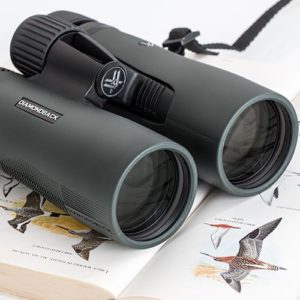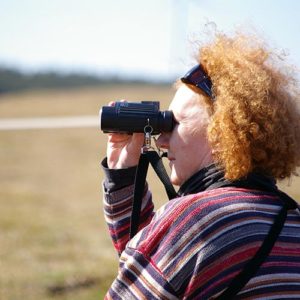For tens of thousands of people, the hustle and bustle of holiday activities also includes participating in an event that has been happening for well over a century – the Christmas Bird Count. This tradition started in North America in 1900. Since then, it has grown tremendously and has resulted in a priceless treasure trove of information related to our winter bird populations.
What is the Christmas Bird Count?
The Christmas Bird Count is a community science / citizen science project that started well before the terms citizen science or community science were thought of. It is run by the Audubon Society and takes place each year from December 14 through January 5. Within that three-week period, birdwatchers come together to take a census or “count” the birds they see.

Each count takes place on a specific day and within a specific 15-mile diameter “count circle.” The count circles remain the same from one year to the next, although new circles in new locations are added almost every year. Only birds that are seen on count day and within the count circle are included in that year’s Christmas Bird Count. And yes, that can lead to some frustrations when a particularly interesting bird refuses to show up on count day or decides to linger just outside of the count circle.
The counts are conducted all across North America, Latin America, the Caribbean, and the Pacific Islands. Most of the counts occur in the United States, but the number of counts outside of the U.S. grows every year.
How did the Christmas Bird Count get started?
For a long time, it was a common holiday tradition in the U.S. to go out in teams and see which team could shoot the most birds or the most species of birds. This was before we had laws against shooting songbirds or raptors. It was even before we had game laws that regulated the numbers of ducks, turkeys, quail, or any other animal that a person could shoot. At this point in our history, it was pretty much open season on everything, all year long. By the late 1800s and early 1900s, some people were starting to say, “Maybe this isn’t such a great idea….”
In 1900, an ornithologist suggested that instead of the traditional hunt, people participate in a “Christmas Bird Census” instead. Twenty-seven people in 25 locations, mostly in the northeastern U.S., participated in that first Christmas Bird Census. Together they recorded over 18,000 birds representing 89 different species. That was the humble beginning of what has become a long-standing tradition which has occurred every year since then.
Why are the data so valuable and how are they used?
The Christmas Bird Count represents one of the largest and oldest continuous databases of information on bird populations on our continent. The fact that the same locations are surveyed year after year makes the information contained in it even more valuable.
Scientists can do things with the data like look at how populations have changed at a local level, as well as, at broader scales over the last century. By combining the count data with other data, such as climate data or land use data, scientists can also look at questions related to how climate change or habitat change impacts bird populations. Without this data we would have only short-term, very localized snapshots of what bird populations looked like in the past.

However, because the Christmas Bird Count spans such a long time period and such a large geographical area, we now have this very broad, very rich trove of data. This dataset is priceless and can never be re-created because we don’t have a time machine to let us go back and see those historical bird populations for ourselves.
If you want to see examples of how scientists have used the data, the Audubon Society has a list of papers based on Christmas Bird Count data. However, scientists aren’t the only ones who can use the data. The Audubon Society has created a tool that anyone can use to track the trends of a given bird species over the last approximately 50 years. You can look at these trends at continental, regional, and state levels. There are also options for anyone who is interested in the historical data to dig into it a little more. This can be fun to play with and see how the winter bird populations near you have changed over the years.
Who can participate and how do you become involved?
One of the amazing things about the Christmas Bird Count is that the vast majority of people participating in it have no scientific training or formal training related to birds. They are often just normal, everyday people who love birds and have taught themselves how to identify the different species they see and hear.
While experienced birdwatchers take lead rolls in the individual counts, often times eager, but less experienced birdwatchers are welcome to participate in the count. Without new birdwatchers who want to learn and participate in the count, then there will be no one to continue adding to this treasure-trove of information over the next hundred years. In other words, anyone who is interested in birds and wants to participate has the opportunity to do so.
To learn more about the Christmas Bird Count, you can go to the Audubon Christmas Bird Count website. More information about participating in a Christmas Bird Count near you, including a link to a map showing all the current count locations can be found at https://www.audubon.org/conservation/join-christmas-bird-count.

Backyard Ecology: Exploring Nature in Your Backyard
Nature isn’t just “out there.” It’s all around us, including right outside our doors. Hi, my name is Shannon Trimboli, and I am the host of Backyard Ecology. I live in southcentral Kentucky and am a wildlife biologist, educator, author, beekeeper, and owner of a nursery specializing in plants for pollinators and wildlife conservation. I invite you to join me as we ignite our curiosity and natural wonder, explore our yards and communities, and improve our local pollinator and wildlife habitat. Learn more or subscribe to my email list at www.backyardecology.net.

Leave a Reply